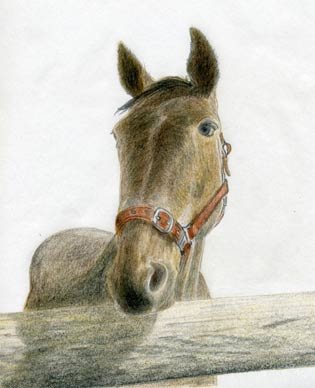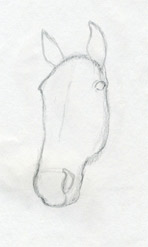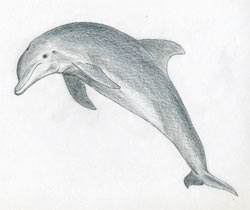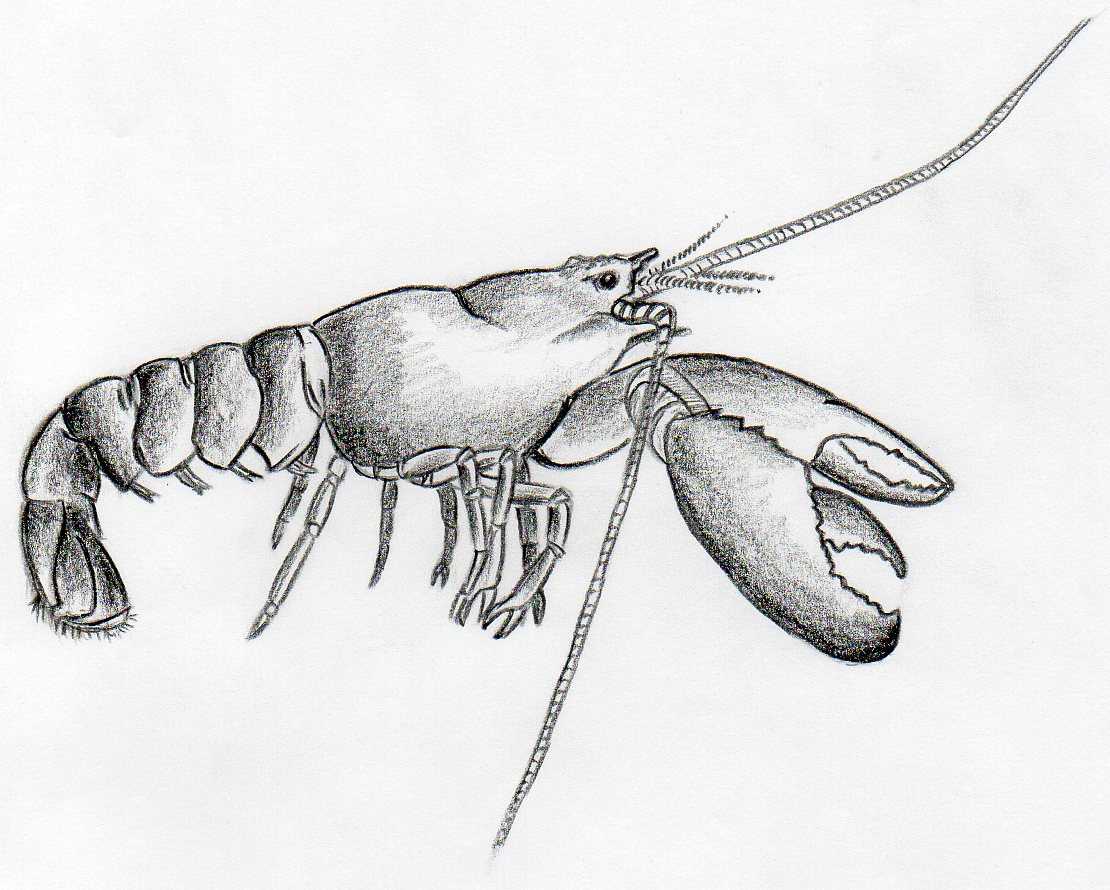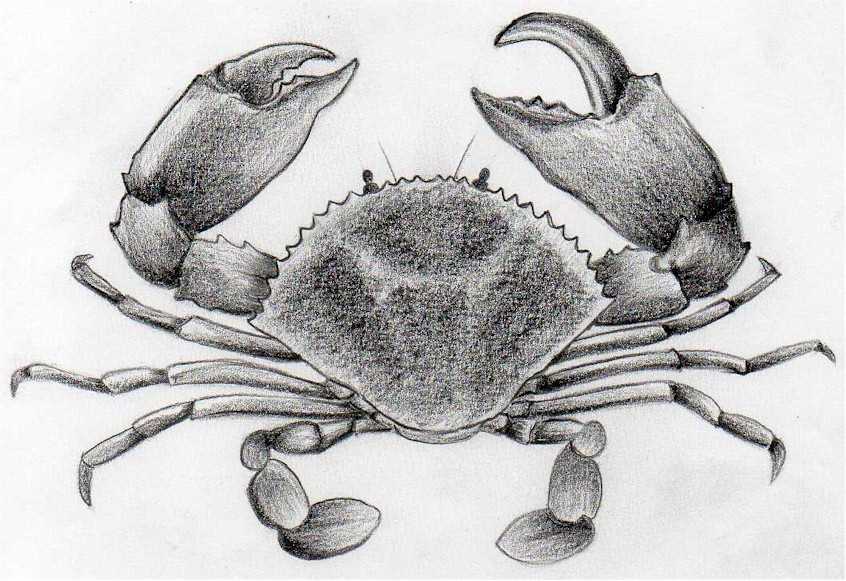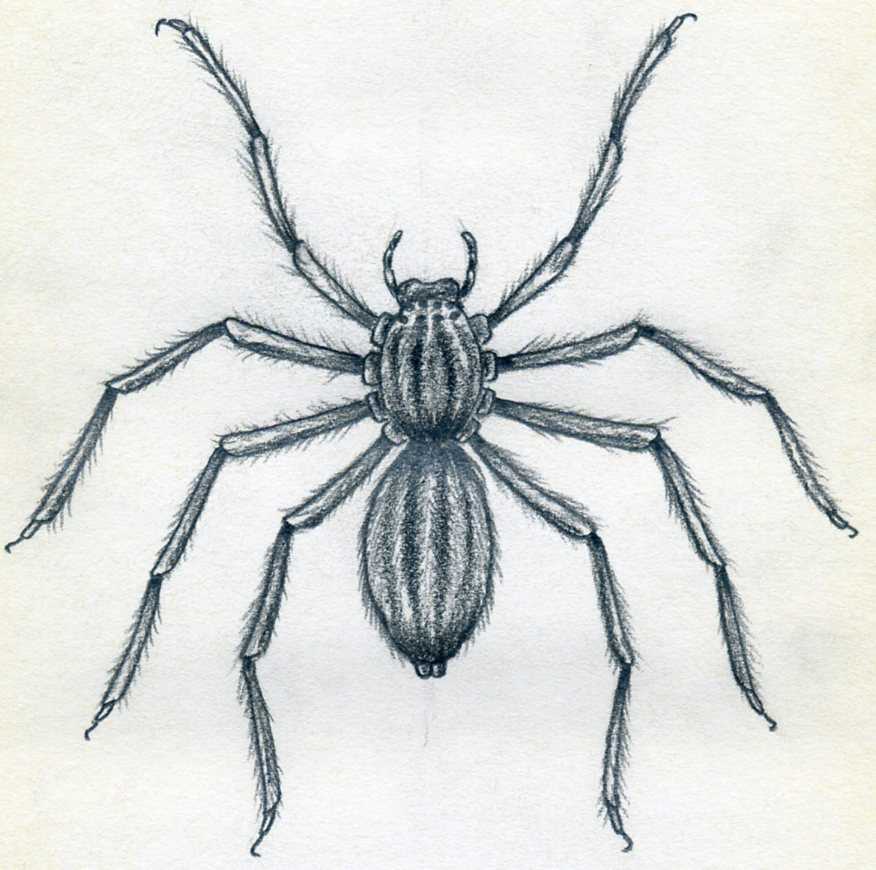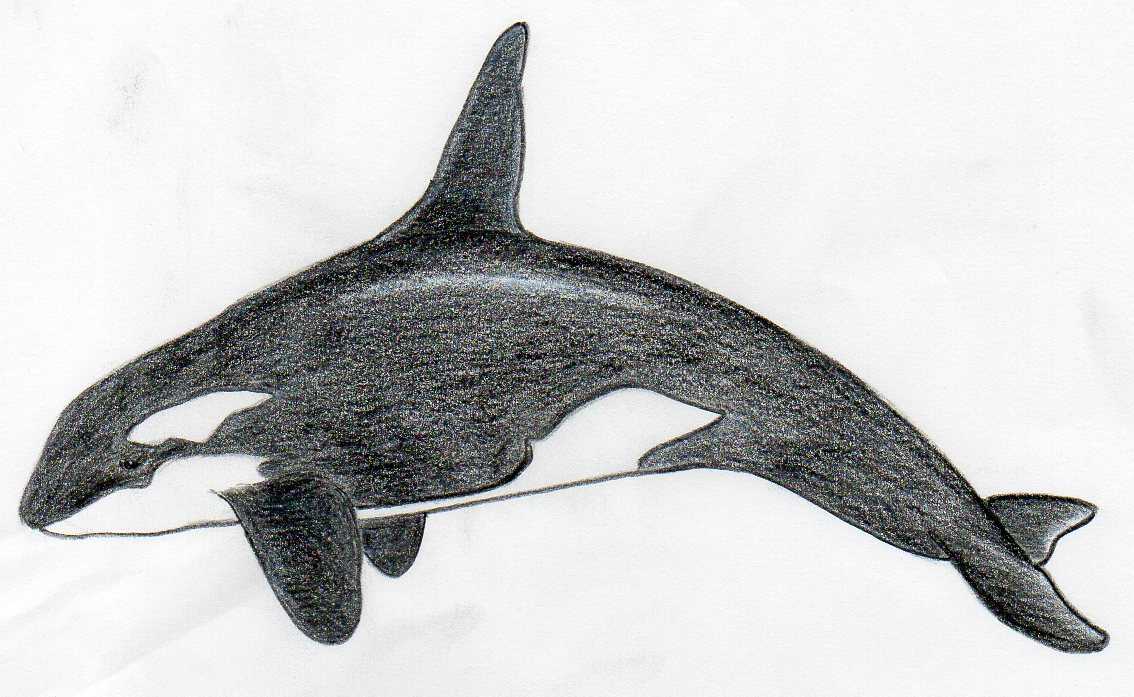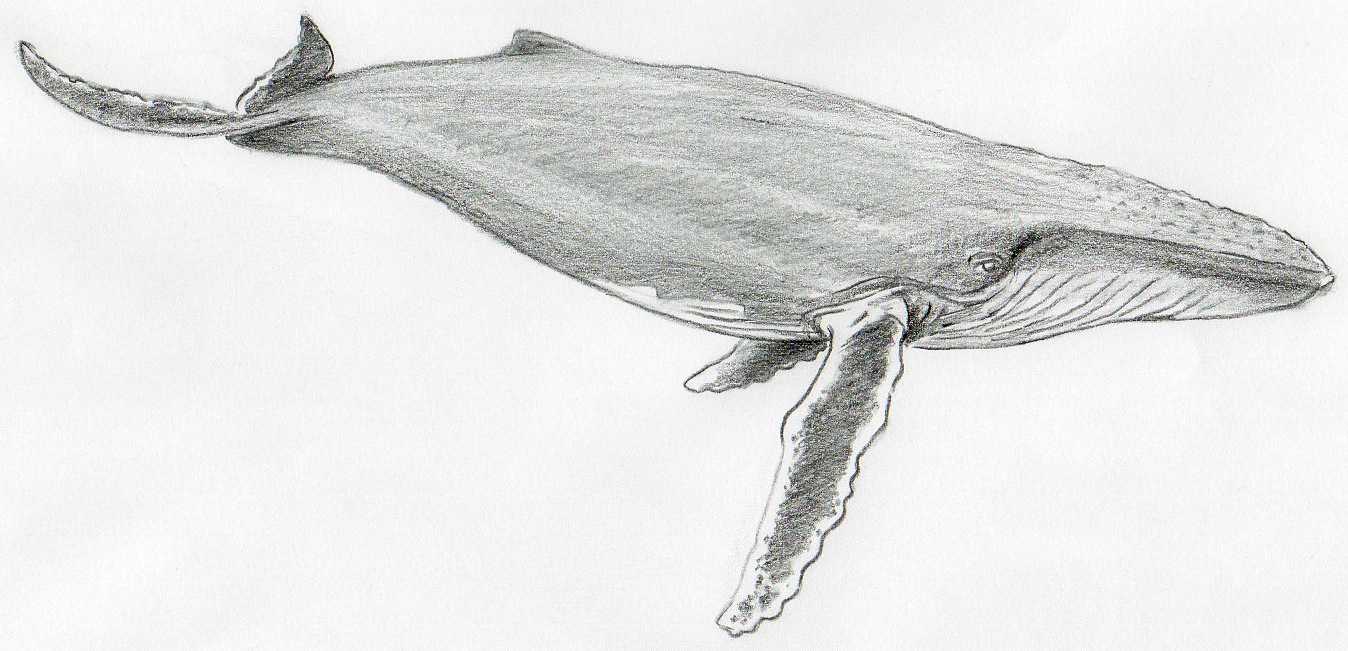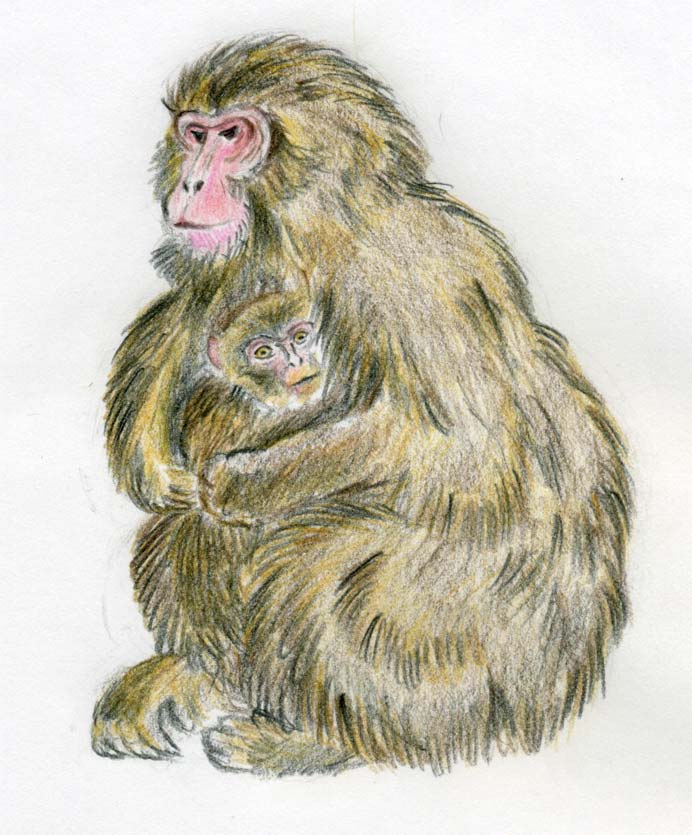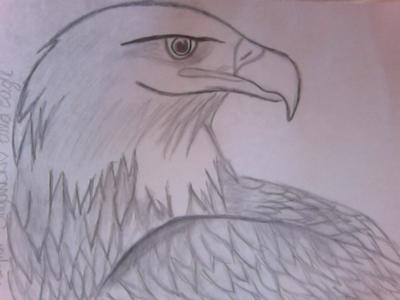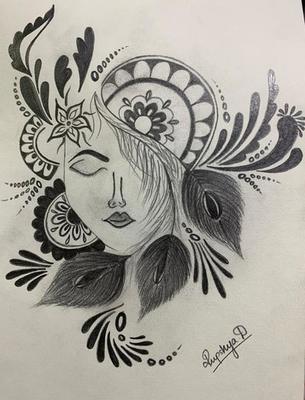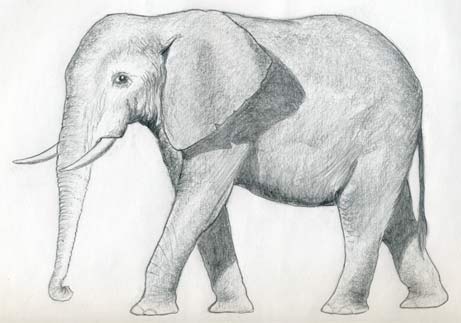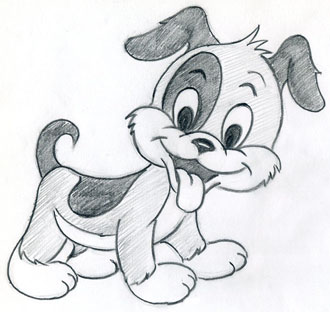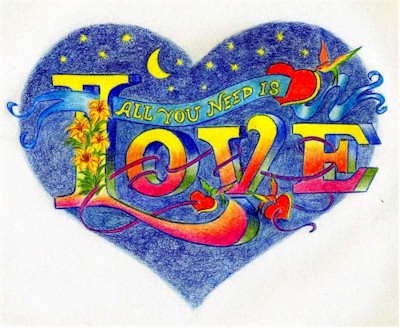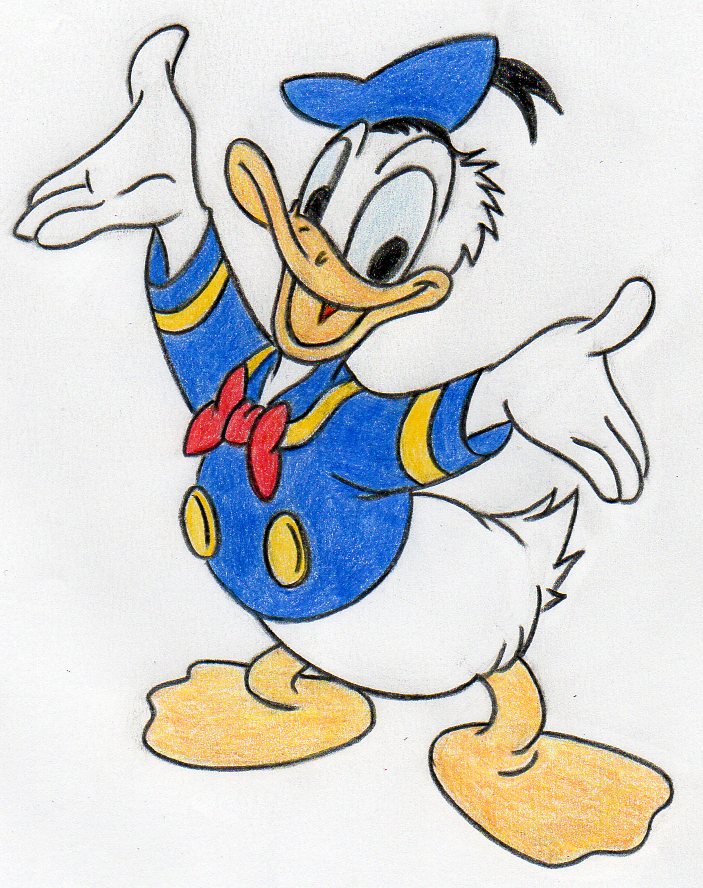How to Draw Horse Head

To draw horse head traditionally belongs among the most popular animal-related themes. The horse head looks deceptively simple.
In fact, it is, but it requires a little delicate and careful shading.
I will show you a very simple process.
You’ll understand that capturing a “so-so” accurate basic sketch of a horse head is not as difficult as you may have imagined before.
Whether you draw from a photo, or a live animal, whatever works for you is OK, but please observe carefully first every possible detail.
It is important to draw a horse's head in your mind, first.
I purposely put more steps than necessary to make clear how the coloring and shading develop.
Please make your drawing better than mine!
Draw Horse Head Step By Step
Before you begin to draw the horse head, first only in your mind, draw the imaginary contours of the head.
It should look something like this “potato” or “noodle”.
By capturing this first basic outline as accurately as possible, your remaining work is going to be very easy.
From now on you’ll proceed pretty fast because you already got right the most important basic head proportion.
Draw the ears and outline the nostrils and the eyes. Do not hurry here, rather slowly but precisely is the best way.
Sketch the rest of the visible part of the horse’s body. Outline the upper rail of the wooden round log horse fence and the headgear.
The idea to draw a horse head with part of the fence simply looks more natural.
Outline the approximate details on the headgear. A well-sharpened pencil will be very helpful here.
Refine the basic outline contours. Correct where you feel necessary so that you’ll get a perfect horse head template you can use anytime later if necessary.
By light brown color pencil, outline - in one single line - the horse head as you see on the picture.
Erase the initial graphite pencil “noise” so that you’ll get a single clear contour.
I recommend using a kneaded eraser instead of a common plastic eraser.
Using the kneaded eraser, no friction occurs between the paper and eraser because you erase by touching – stamping the paper by eraser.
If you do not have kneaded eraser handy, you can of course use an ordinary plastic eraser but get one as soon as possible. It really helps a lot.
Color the head and the rest of the body in one single flat color. No shading yet.
Shading
Continue to draw the horse head as you see in the picture, using the same light brown color pencil.
Observe well the original object (photo, picture, or a live animal). Notice where the color is dark brown – almost looks like black (inner part of the ears).
If you did not capture well the shape of the muzzle (the area of nose and lips), do it now.
Leave the headgear blank. Coloring the headgear will be one of the last steps.
Take a dark brown color pencil and start to shade the darker parts on the head.
You’ll also need a black pencil from now on.
Do not use a graphite pencil to darken the drawing.
Graphite shines and will destroy color pencil drawing if mixed.
If possible, always make the pencil strokes in the direction of fur growth. It will look three-dimensional and more realistic.
When you draw a horse head, always make a basic flat coloring (light brown) first on which you will further develop (shade) other darker color tones.
By doing so, you’ll have control over the shading process. You’ll be able to easily notice errors and correct them in time.
Add – shade - further the darker parts. Especially the muzzle, nostrils, and the inner area of the ears.
I know, each step may look like a lot of work. It is. I intentionally upload this picture too, so that you can see even better how the shading develops in small steps.
If you draw a horse head, and you really want to be satisfied with your work, it is good if you take your time and work out the minimum necessary details.
The moment of truth. Let’s color the eyes. You’ll need dark blue and a black color pencil.
If you are not sure, please practice first on a separate paper. By coloring the eyes your horse instantly gets a facial expression. It is as if you give it life.
Before you begin, sharpen your pencils (black and blue). You’ll have better control over the eye drawing if your pencil is sharper. The blue color in the eyes is very weak almost invisible.
Now you can begin to add color to the headgear. Choose whatever color you like, but choose a different color tone than the color of the head itself.
You may ask “when I draw a horse head, do I need to draw this headgear?”. The answer is: “no”. It is an option.
You may erase it completely and draw the picture without it. You can still erase it if you do not feel like drawing it. Add a basic light brown color to the horse fence.
Work out the wooden surface of the upper rail on the horse fence and add the shade.
Here, you can draw a landscape behind the horse or simply leave the drawing as it is.
The reason I did not draw anything behind the animal is that the shape of the horse head is better visible on the white background so that you can draw the horse head better and draw it quickly.
I encourage you to add some landscape behind; even the simple grass and blue sky would make all the difference.
And remember; always make your drawing better than mine ;-)
Did You Enjoy Drawing Horse Head?
Check Out Also These Animal Drawing Tutorials:
Visitors Personal Gallery Pages
Please see and enjoy the following collection of personal galleries. We all believe you will have a lot of fun. Observing others’ artwork is always, always very inspirational. You may get some new ideas for your own drawings.
|
| |||
Theme Based Visitors Galleries
The following Theme Based Galleries are a collection of selected drawings from various authors based on a certain theme. I would like you to get as much inspiration as possible for your own drawings.
And Now It's Your Turn
SHARE YOUR DRAWINGS
Select The Category and Follow The Uploading Instructions
Share your own drawings, sketches or doodles by choosing a suitable
category below. You will be guided to the uploading process step by
step.
Latest Visitor's Drawings
-
Loneliness
Jul 20, 24 08:03 PM
Loneliness -
A macho man kills a poisonous snake
Jul 18, 24 09:15 AM
A macho man kills a poisonous snake. -
Jude Bellingham
Jul 15, 24 09:01 AM
This is my method of drawing an Englishman Jude Bellingham on Microsoft Paint. He was born in Stourbridge, West Midlands, England, United Kingdom on 29th -
Fatty people are stupid fellows
Jul 14, 24 08:46 AM
Fatty people are stupid fellows. -
Face the present time
Jul 14, 24 08:45 AM
Face the present time. -
cricket
Jul 02, 24 04:26 PM
cricket -
Three Generations: Grandfather, Father and Son
Jun 26, 24 05:52 PM
Three Generations: Grandfather, Father and Son -
The Shapers heads
Jun 26, 24 07:23 AM
This is my drawing of the Shapers heads for the fake Nickelodeon animated series of the same name on Microsoft Paint. In order, they're Purple Square, -
Where nature dominates
Jun 24, 24 09:26 AM
Imaginary ballpoint pens art. In this fast and furious world dominated with pollution and skycrapers, we need this type of peacable place for anti-stress -
Never argue with the barking dogs
Jun 24, 24 09:23 AM
Never argue with the barking dogs. -
Imaginary pen art on bristol paper
Jun 22, 24 07:28 AM
Colourful nature done with ballpoint pens. -
Imaginary pen art, beautiful nature
Jun 22, 24 07:22 AM
Ballpoint pens art showing a peaceful place. The grass was made with light green pen and application of lemon yellow watercolour. -
Old building in forest
Jun 22, 24 07:20 AM
Imaginary ballpoint pens art. An old building in a forest. -
Typical Mauritius
Jun 22, 24 07:19 AM
Imaginary ballpoint pens art showing typical Mauritius. -
Inspired by Mumbai city
Jun 22, 24 07:16 AM
Some years back was watching a video about Mumbai city. Inspired by it, I decided to make an imaginary art showing the atmosphere of it.
